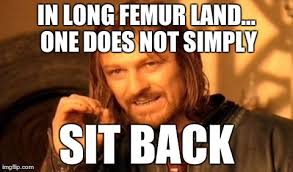
There is no comparison between an adult’s full squat and a young child’s full squat, yet people continue comparing the two when discussing the back squat exercise.
As a former personal trainer, it continues to amaze me at how often other personal trainers and hardcore strength training and weightlifting enthusiasts keep pointing out that if a young child or toddler could get down into a full squat, an adult should be able to do so. Bah!
Any layperson with his eyes half open should be able to see a more-than-subtle difference between a toddler’s, and even grade schooler’s, body proportions, and an adult’s, even a short adult’s.
The distance between a toddler’s hips and head, relative to their legs, is significantly greater than in an adult’s!
View a profile of a toddler in a full squat. The relatively huge head of the child below prevents him from falling backwards and provides a comfortable leverage point.

Shutterstock/Rozochka
The length between the toddler’s hips and head acts as a fabulous leveraging device that easily keeps the baby (or young child) from falling backwards, while allowing the toddler to keep his back fairly upright.
To keep from falling backwards, a person in a deep squat needs to have the shoulders vertically aligned with the midfoot.
The less length between the hips and the shoulders, the more that the person needs to lean their torso forward, to get the shoulders smack over the midfoot.
This fact of physics is SO obvious, I don’t know why it escapes so many fitness professionals and gym enthusiasts.
A young child squats to retrieve something on the floor or work with something on the ground.
Instinctively a toddler knows that if he bends over like an adult, he’ll fall flat on his head.
Toddlers and babies are top-heavy enough to tip headfirst into a bucket of water and drown; they can’t lift themselves out because there’s not enough “length” under their center of gravity to straighten back up.
A report from the U.S. Consumer Product Safety Commission states: “…the stability of these buckets, makes it nearly impossible for top-heavy infants and toddlers to free themselves when they fall into the bucket headfirst.”
I’ve read the strength training and muscle building forums, and time and time again, someone points out that if toddlers can full squat, adults can, once they stop making excuses.
Now, I’m not endorsing any excuses here. My criticism is the comparison of adult full squats to children’s full squats (also known as the Third World squat).
I might also mention that the full squat of a toddler is entirely different from the classic Third World squat, which is more of a crouch, though in some nations, an adult version of the toddler full squat is commonly used as a resting position.
Another reason the child’s squat to adult’s is an unfair comparison is because toddlers have ridiculously short femurs relative to their shins.
This is SO evident in early toddler-hood, when babies are walking across a room just in their diapers, and all you see are these shins coming out of the diaper; where are their thighs (femurs)?
The femur gets longer, relative to the rest of the body, as the child grows, but for quite a while, that femur is this short stumpy thing that provides superb leverage in a full squat, keeping the shoulders easily aligned over the midfoot because the minimal hip displacement by the super short femur minimizes the forward torso lean.
An adult’s head is one-eighth their height, on average. An infant’s is one-fourth their body length!
Though a toddler has grown quite a bit since being born, his head is nowhere near one-eighth his body length!
That big bobbing head of a toddler serves as an excellent counterforce to the mild hip displacement in a full squat!
Older children, too, have this advantage, but not as pronounced, but enough to make a comparison between even an older child’s full squat and an adult’s full squat outright ridiculous.
 Lorra Garrick is a former personal trainer certified through the American Council on Exercise. At Bally Total Fitness she trained women and men of all ages for fat loss, muscle building, fitness and improved health.
Lorra Garrick is a former personal trainer certified through the American Council on Exercise. At Bally Total Fitness she trained women and men of all ages for fat loss, muscle building, fitness and improved health.
.









































